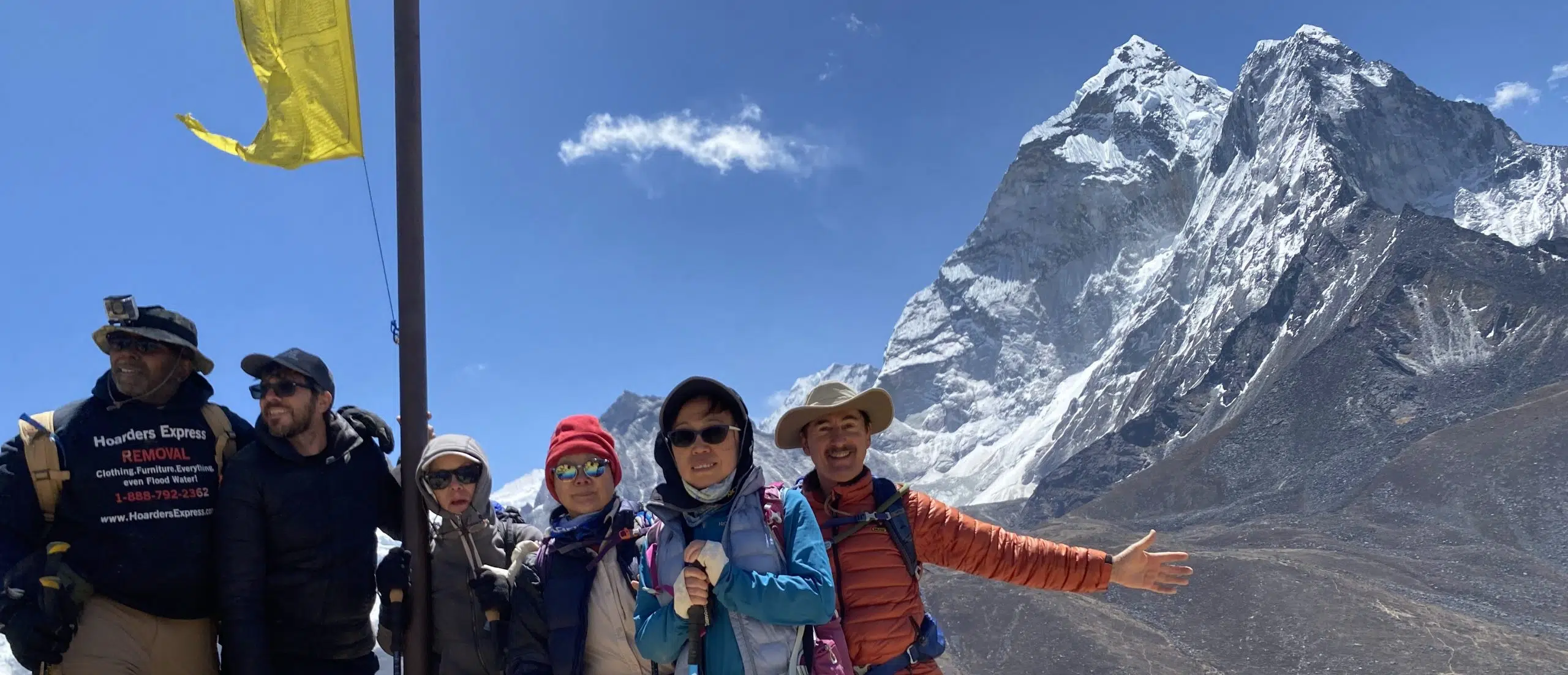Embracing the Himalayas: A Comprehensive Guide to Trekking in Nepal
Nestled amidst the towering peaks of the Himalayas, Nepal is a treasure trove of adventure and beauty. The country’s diverse landscapes, ranging from snow-capped mountains and rolling hills to lush valleys and dense forests, make it a paradise for trekkers worldwide. This comprehensive guide aims to equip you with all the necessary information for your trekking expedition in Nepal, promising an experience that will leave you with memories to last a lifetime.
Why Choose Nepal for Your Trekking Adventure?
Nepal, home to eight of the world’s ten highest peaks, including the awe-inspiring Mount Everest, offers an unparalleled trekking experience. But the allure of Nepal extends beyond its majestic mountains. The country’s rich cultural tapestry, marked by centuries-old traditions and warm, welcoming locals, adds a unique dimension to your trekking adventure. Whether navigating through picturesque mountain villages or exploring ancient monasteries, trekking in Nepal is as much a cultural immersion as a nature retreat.
The Rich Culture of Nepal
Nepal’s rich and diverse culture is a significant part of the trekking experience. The country is a melting pot of ethnic groups with unique traditions, languages, and customs. From the Sherpas of the Everest region to the Tamangs of the Langtang Valley, each community offers a unique cultural experience. As you trek through the remote villages, you’ll have the opportunity to interact with the locals, participate in their traditional festivals, and learn about their way of life. This cultural immersion adds a unique dimension to your trekking adventure in Nepal.
The Breathtaking Landscapes of Nepal
Nepal’s diverse landscapes are a paradise for nature lovers. The country offers a wide range of natural beauty, from the towering peaks of the Himalayas and the rolling hills of the mid-hills to the lush jungles of the Terai. As you trek through the various trails, you’ll come across stunning mountain vistas, serene alpine lakes, verdant forests, and a wide variety of flora and fauna. The country’s rich biodiversity, including several endangered species like the Snow Leopard and the Red Panda, is another highlight of trekking in Nepal.
The Ideal Time for Trekking in Nepal
Timing is crucial when planning your trek in Nepal. The country’s trekking season primarily falls into pre-monsoon (February to May) and post-monsoon (September to November). These months offer the most favourable weather conditions, with clear skies, moderate temperatures, and spectacular views of the Himalayan panorama. However, some treks, like the Annapurna Circuit, can be undertaken during winter, offering a different landscape perspective.
Understanding the Weather and Climate in Nepal
Nepal’s weather and climate play a significant role in determining the success of your trek. The country experiences four main seasons – spring (March to May), summer (June to August), autumn (September to November), and winter (December to February). Each season offers a unique trekking experience.
Spring is a great time to trek; the weather is warm, and the hills are covered in blooming rhododendrons and other wildflowers. Summer is the monsoon season in Nepal, and while the rain might make the trails slippery and challenging, the landscape is at its greenest. Autumn is the most popular trekking season due to the clear skies and moderate temperatures. Winter treks are possible in lower altitudes, but the higher regions are challenging due to heavy snowfall and freezing temperatures.
Top Trekking Routes in Nepal
Nepal offers a wide range of trekking routes, each with unique attractions. Whether you’re a seasoned trekker looking for a challenging adventure or a beginner seeking a gentle trek, Nepal has something for everyone. Here are some of the top trekking routes in Nepal.
- Everest Base Camp Trek: The Everest Base Camp Trek is Nepal’s most iconic trekking route, taking you to the foot of the world’s highest mountain. This challenging yet rewarding trek offers an up-close view of Mount Everest and several other towering peaks of the Himalayas. The trek also takes you through the heartland of the Sherpa community, giving you a glimpse into their rich culture and traditions.
- Annapurna Circuit Trek: Known for its diverse landscapes, it takes you through lush valleys, quaint villages, arid high mountain passes, and stunning mountain vistas. This trek is a testament to Nepal’s geographical and cultural diversity. The trek also includes visiting the Thorong La Pass, the highest point on the trek, offering stunning views of the Annapurna massif.
- Langtang Valley Trek: The Langtang Valley Trek is an excellent choice for those seeking a less crowded route. This trek offers a serene Himalayan experience, with breathtaking views and a rich cultural encounter. The trek takes you through the Langtang National Park, home to various flora and fauna, and offers a chance to explore the unique Tamang culture.
- Manaslu Circuit Trek: This off-the-beaten-path trek circles the world’s eighth-highest peak, Manaslu. The trek offers natural beauty and cultural richness, taking you through remote villages and untouched landscapes. The hike is also an excellent opportunity to witness the unique culture of the Tsum Valley, known for its ancient Buddhist traditions.
- Ghorepani Poon Hill Trek: Ideal for beginners and families, the Ghorepani Poon Hill Trek offers stunning views of the Annapurna and Dhaulagiri ranges. The trek is relatively short and easy, making it a popular choice for those with limited time. The highlight of the trek is the sunrise view from Poon Hill, which offers a panoramic view of the Himalayan peaks.
Essential Tips for a Successful Trek in Nepal
Trekking in Nepal can be challenging, but with the proper preparation and mindset, it can be an advantageous experience. Here are some essential tips to ensure a successful trek in Nepal.
- Physical Preparation: Trekking in Nepal can be physically demanding, especially at high altitudes. Regular exercise, including cardio and strength training, should be part of your preparation months before the trek. It’s also important to familiarize yourself with the symptoms of altitude sickness and take necessary precautions.
- Hire Local Guides and Porters: Local guides and porters are invaluable during your trek. They know the terrain and provide insights into the local culture and traditions. Hiring a local guide also contributes to the local economy, supporting sustainable tourism practices.
- Packing Essentials: Packing light yet brilliant is crucial. Your backpack should include warm clothing, sturdy trekking boots, a first-aid kit, water purification tablets, and energy-rich snacks. It’s also a good idea to carry a map and a compass, even if you have a guide. Remember, it’s always better to be over-prepared than under-prepared when trekking in remote areas.
- Respect for Local Culture: Nepal is a country with deep-rooted traditions. Always respect local customs, religious sites, and cultural norms. Dress modestly, especially when visiting sacred sites, and always ask for permission before taking photos of people or private property.
- Stay Hydrated and Eat Well: Staying hydrated and eating a balanced diet is crucial when trekking at high altitudes. Drink plenty of water and eat meals rich in carbohydrates and proteins. Avoid alcohol and caffeine, as they can lead to dehydration.
- Leave No Trace: As responsible trekkers, we must preserve the natural beauty of the places we visit. Always carry a trash bag and bring back any waste you produce. Stick to the trails and avoid disturbing the wildlife. Remember, we are guests in these beautiful landscapes, and it’s our responsibility to leave them as we found them.
Conclusion
Trekking in Nepal is more than an adventure; it’s a journey that takes you through the heart of nature, immerses you in a vibrant culture, and challenges you in ways you’ve never imagined. With every step on the rugged trails, you’ll discover the beauty of the Himalayas and the strength within you. So lace up your boots, pack your spirit of adventure, and embark on the trek of a lifetime in Nepal.
Frequently Asked Questions About Trekking in Nepal
- Do I need a permit to trek in Nepal? Yes, it would help if you had a permit to trek in most regions of Nepal. The type of permit depends on the trekking region. You’ll need a TIMS (Trekkers’ Information Management System) card and most treks’ national park entry permits.
- Can I trek solo in Nepal? Yes, solo trekking is possible in many regions of Nepal. However, some areas like the Manaslu Circuit and Upper Mustang require a minimum of two trekkers accompanied by a licensed guide. Hiring a guide or porter is recommended for safety reasons, even if you’re trekking solo.
- What kind of food can I expect on the trek? Most teahouses on the trekking routes offer a menu with various dishes, including Nepali, Indian, Tibetan, and Continental cuisines. The most common meal is ‘dal bhat’, a traditional Nepali dish consisting of lentil soup, rice, and vegetable curry. It’s a balanced meal and provides the necessary nutrients for the trek.
- What should I pack for a trek in Nepal? Packing for a hike in Nepal depends on the trekking season and the region. However, some essentials include warm clothing, a down jacket, trekking boots, a rain jacket, a hat and sunglasses, a water bottle, a first-aid kit, and trekking poles. It’s also recommended to carry a map, a compass, and a headlamp.
- Is travel insurance necessary for trekking in Nepal? Yes, travel insurance is highly recommended for trekking in Nepal. Make sure your insurance covers emergency evacuation and high-altitude trekking. Accidents and illnesses can happen, and helicopter evacuation costs are high. Therefore, it’s better to be safe than sorry.







